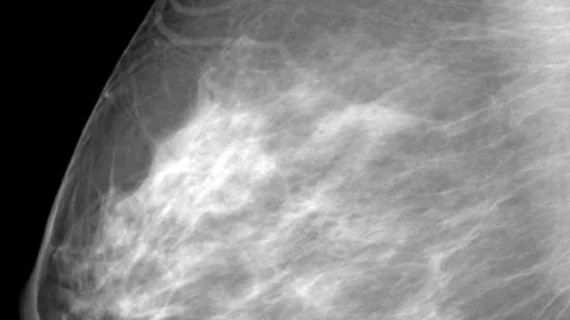A new study published in Radiology: Artificial Intelligence discusses how an AI tool can achieve the challenging task of accurately and consistently classifying breast density on routine mammograms.
Women who have dense breasts have an increased risk of developing breast cancer and, due to masking effects, high density also makes detecting lesions more difficult for radiologists. Dense breasts are most often categorized using the American College of Radiology’s Breast Imaging-Reporting and Data System (BI-RADS), but inter- and intra-observer variability may limit the system's clinical viability.
To address this issue, researchers in Italy developed an artificial intelligence software using deep learning techniques with convolutional neural networks that can detect the most minute patterns on mammographic images.
“The particular value of this tool is the possibility to overcome the suboptimal reproducibility of visual human density classification that limits its practical usability,” explained study co-author Sergio Papa, MD, from the Centro Diagnostico Italiano in Milan, Italy. “To have a robust tool that proposes the density assignment in a standardized fashion may help a lot in decision-making.”
Using 760 mammographic images, seven board-certified radiologists supervised the training of the AI software, dubbed TRACE4BDensity. By including an additional 384 images from a different center, three radiologists, whose breast density assessments were closest to the consensus of the initial readers, were able to externally validate the software.
For discerning between low- and high-density breast tissue, the AI software achieved an accuracy of 89%. Experts also highlighted the 90% agreement between the tool and three human readers.
“A tool such as TRACE4BDensity can help us advise women with dense breasts to have, after a negative mammogram, supplemental screening with ultrasound, MRI or contrast-enhanced mammography,” said another study co-author Francesco Sardanelli, MD, with the IRCCS Policlinico San Donato in San Donato, Italy.
Many states in the U.S. already have laws in place that require institutions to notify women with dense breast tissue of their mammographic findings, but many other countries do not request the same actions from their providers. The researcher stated that they would like to continue to study the utility of their tool for countries where there are not currently breast density communication mandates, as they believe it could be beneficial for radiologists and patients.
More on breast density research:
Mayo Clinic offers new guidance on supplemental screening of women with dense breasts
Many women willing to pay more for screening MRI, particularly those with dense breasts
Subjectivity remains a challenge among radiologists using BI-RADS 5 for breast density
New mammoscope tool bolsters cancer screening in women with dense breasts

